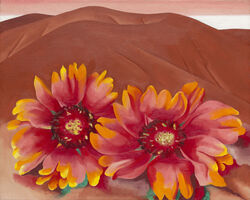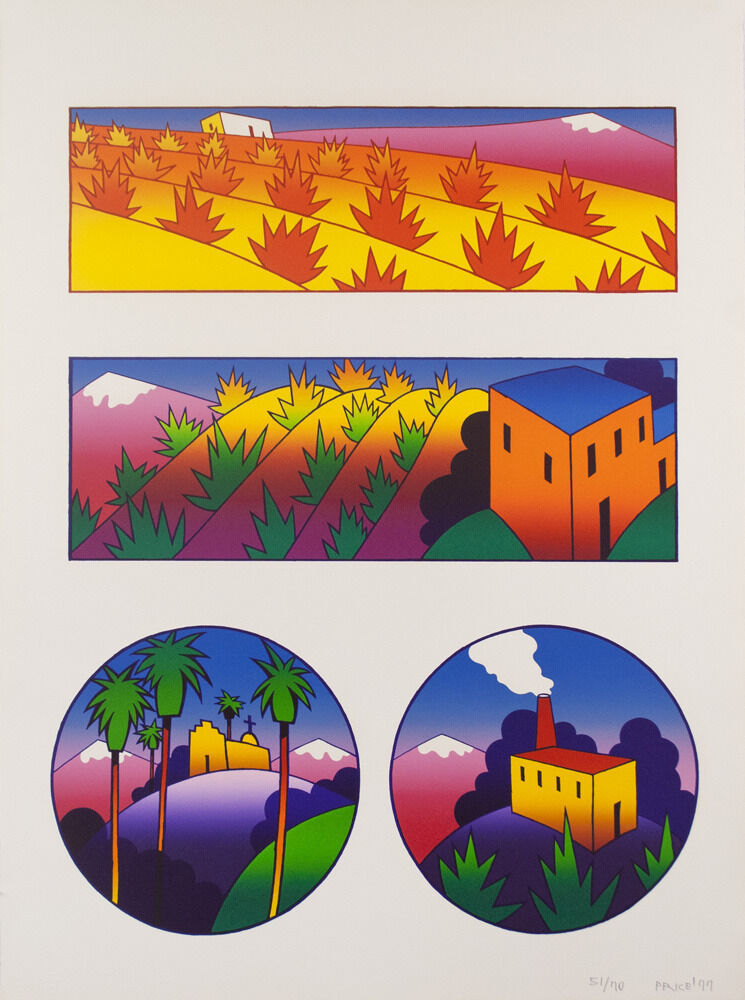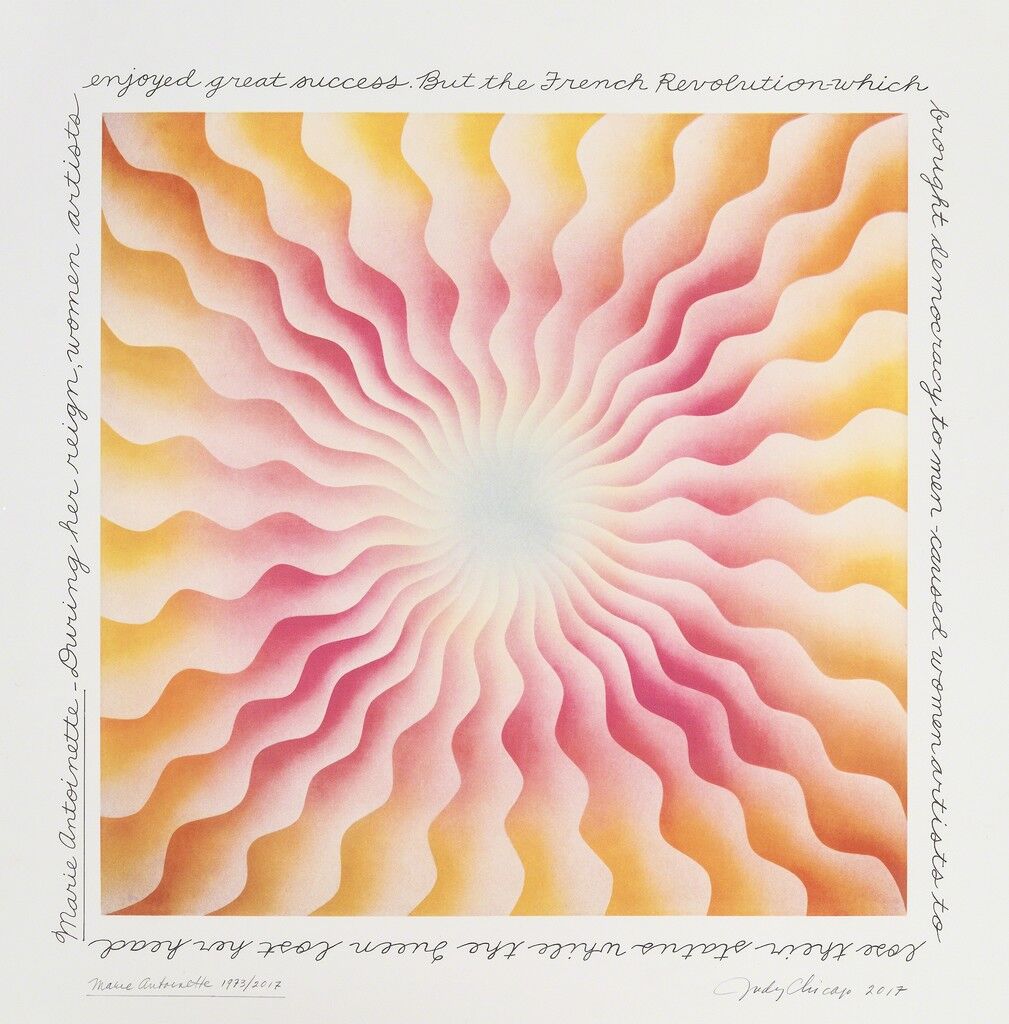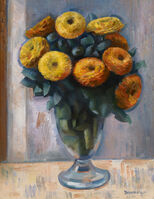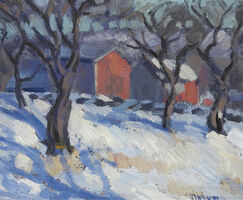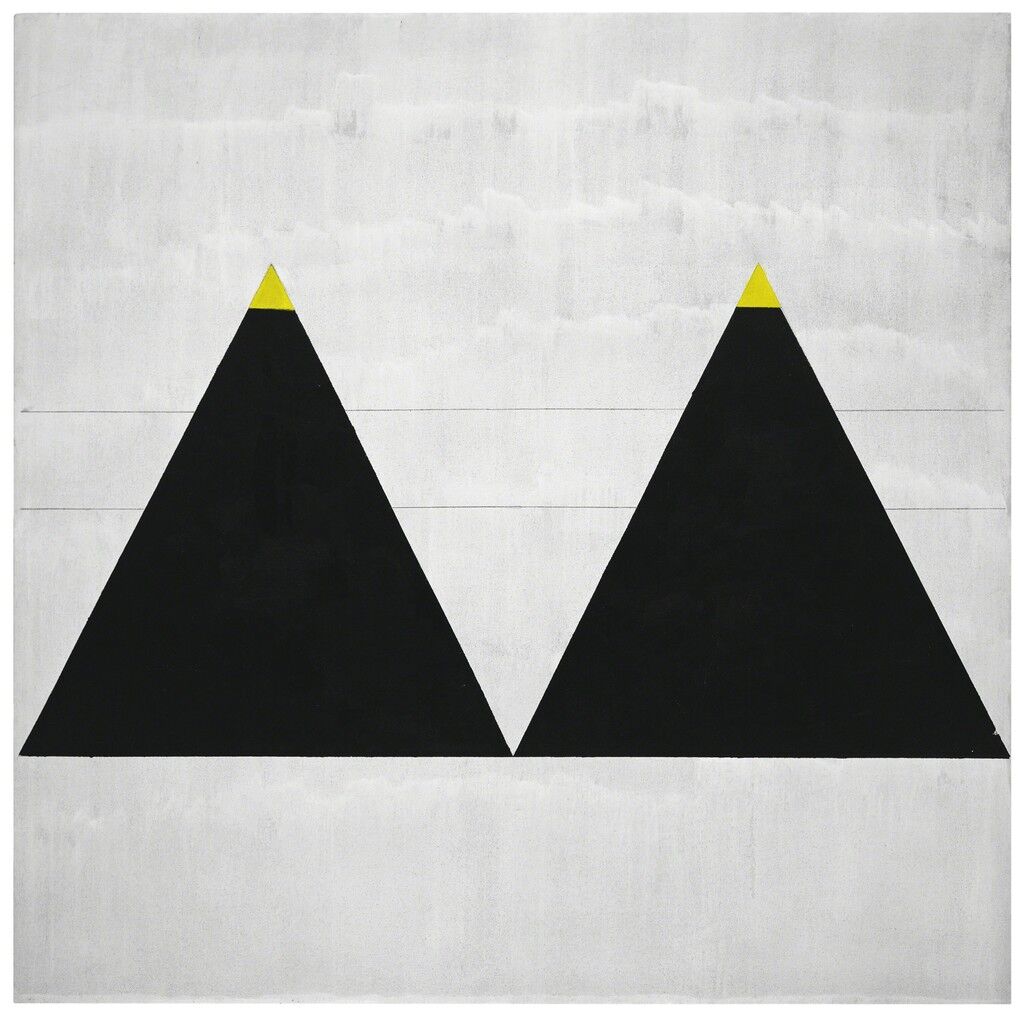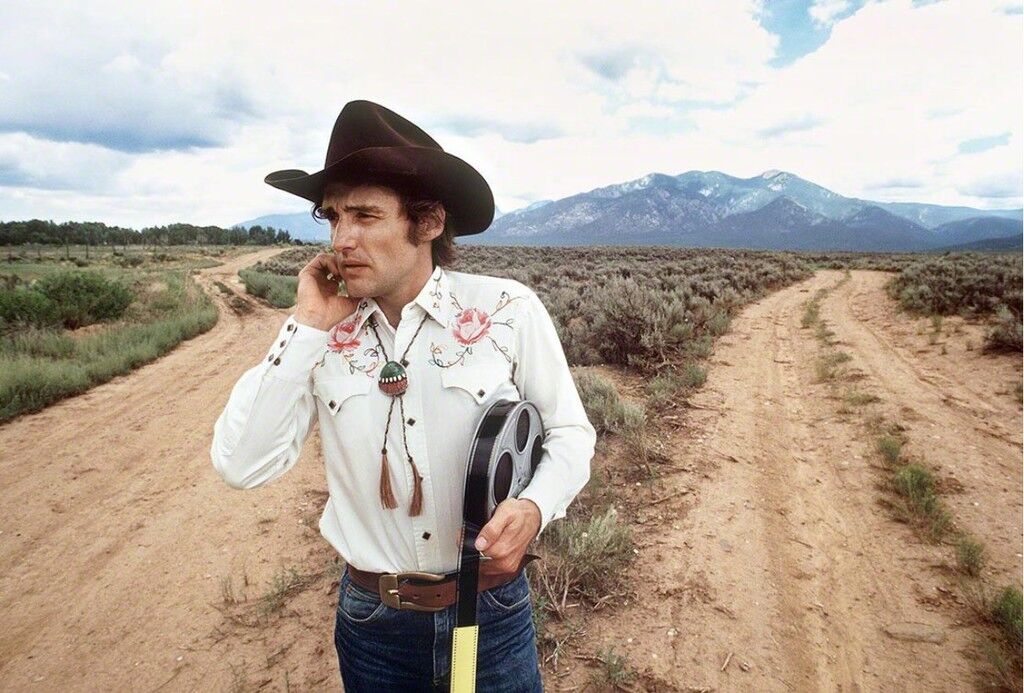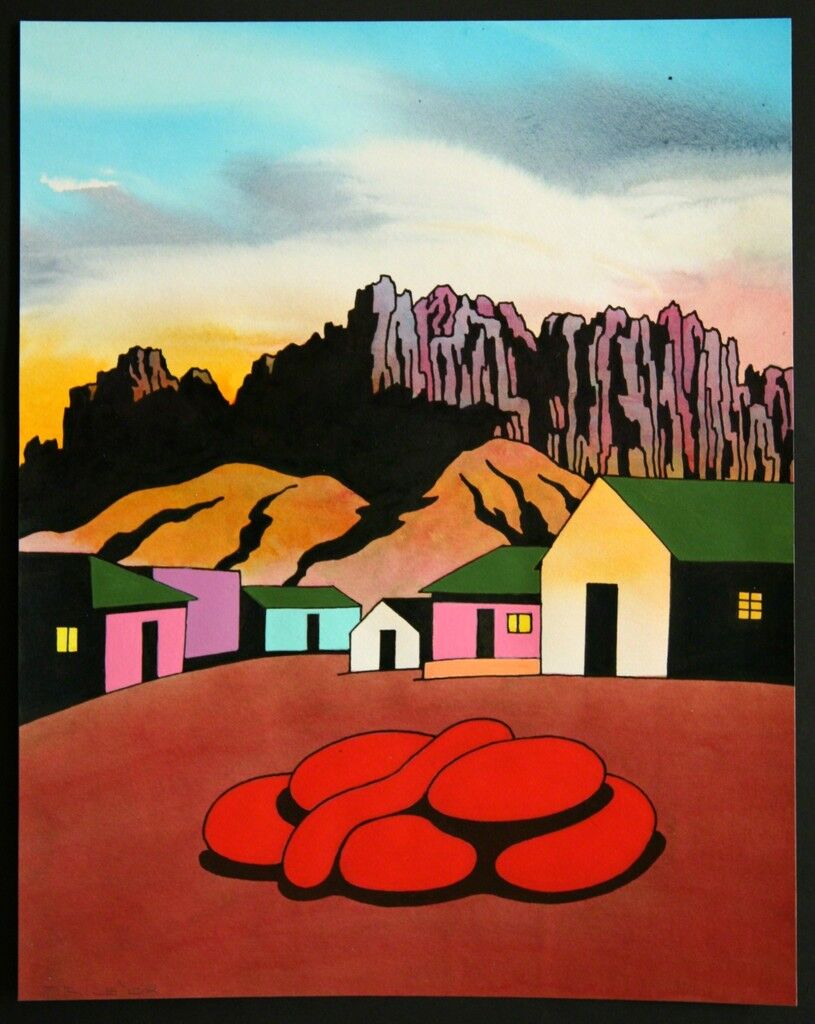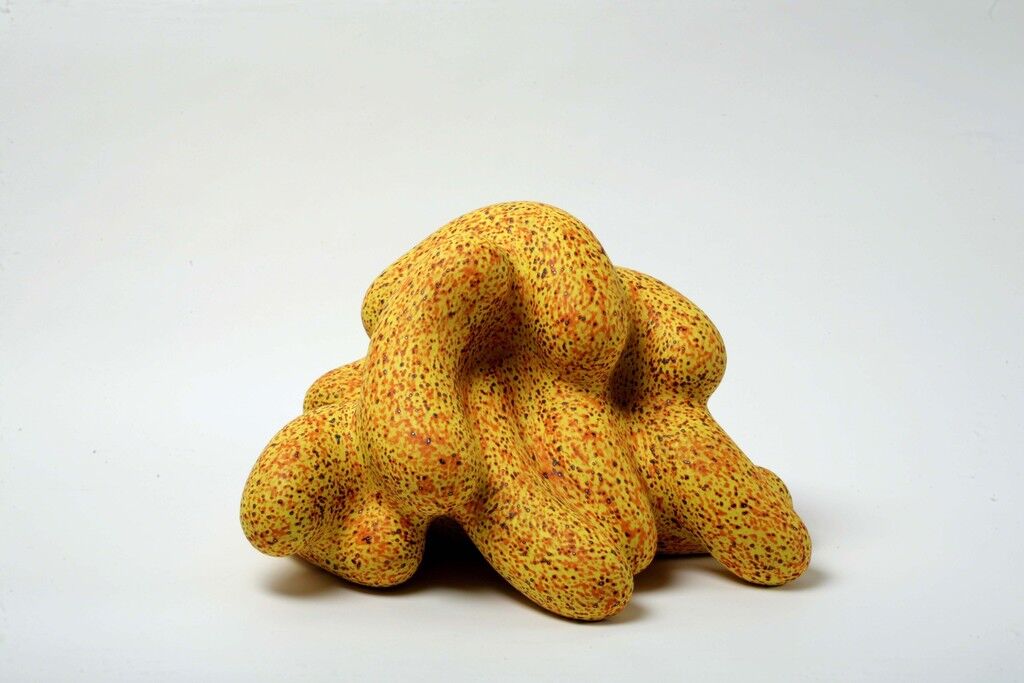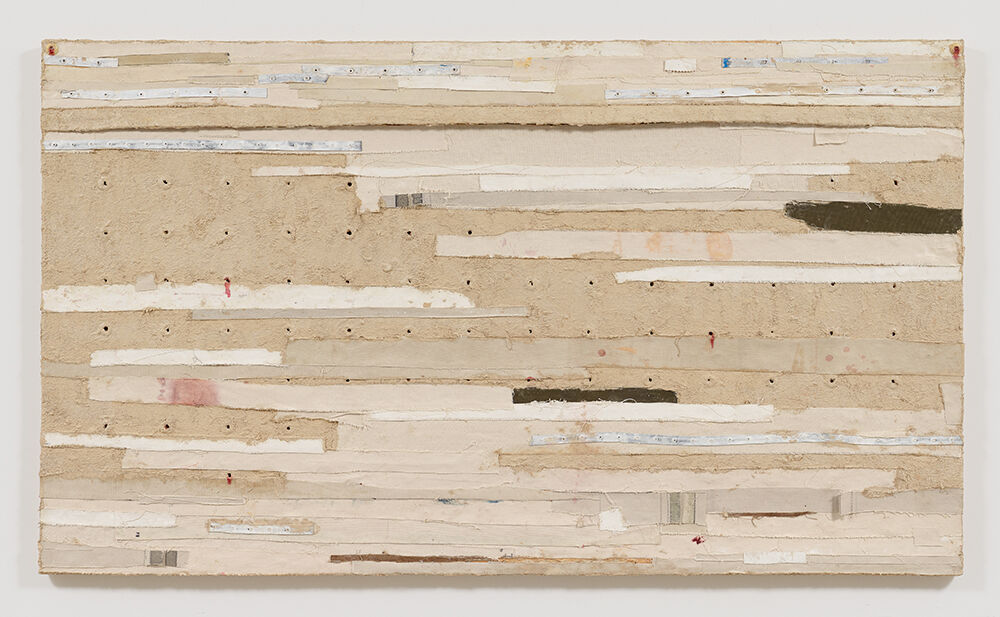Why So Many Artists Have Been Drawn to New Mexico
Georgia O’KeeffeAmerican, 1887–1986Follow
artsy_ Georgia O’Keeffe had an unexpected train detour to thank for her first encounter with New Mexico. Little did she know, it was the land that would free her—both artistically and emotionally.
Several months after photographer-gallerist Alfred Stieglitz
presented O’Keeffe’s first New York solo show, in April 1917, the 29-year-old painter embarked on a trip across the American West with her youngest sister, Claudia. While they’d planned to head straight from Texas to Colorado, their train detoured to Santa Fe. New Mexico’s vast, mercurial skies and incandescent light mesmerized the artist. “I’m out here in New Mexico—going somewhere—I’m not positive where—but it’s great,” she gushed in a letter to Stieglitz, dated August 15th. “Not like anything I ever saw before.”
“There is so much more space between the ground and sky out here it is tremendous,” she continued. “I want to stay.” By 1949, O’Keeffe had made the New Mexican high desert her permanent home, indelibly tattooing its landscape to her work, identity, and legacy.
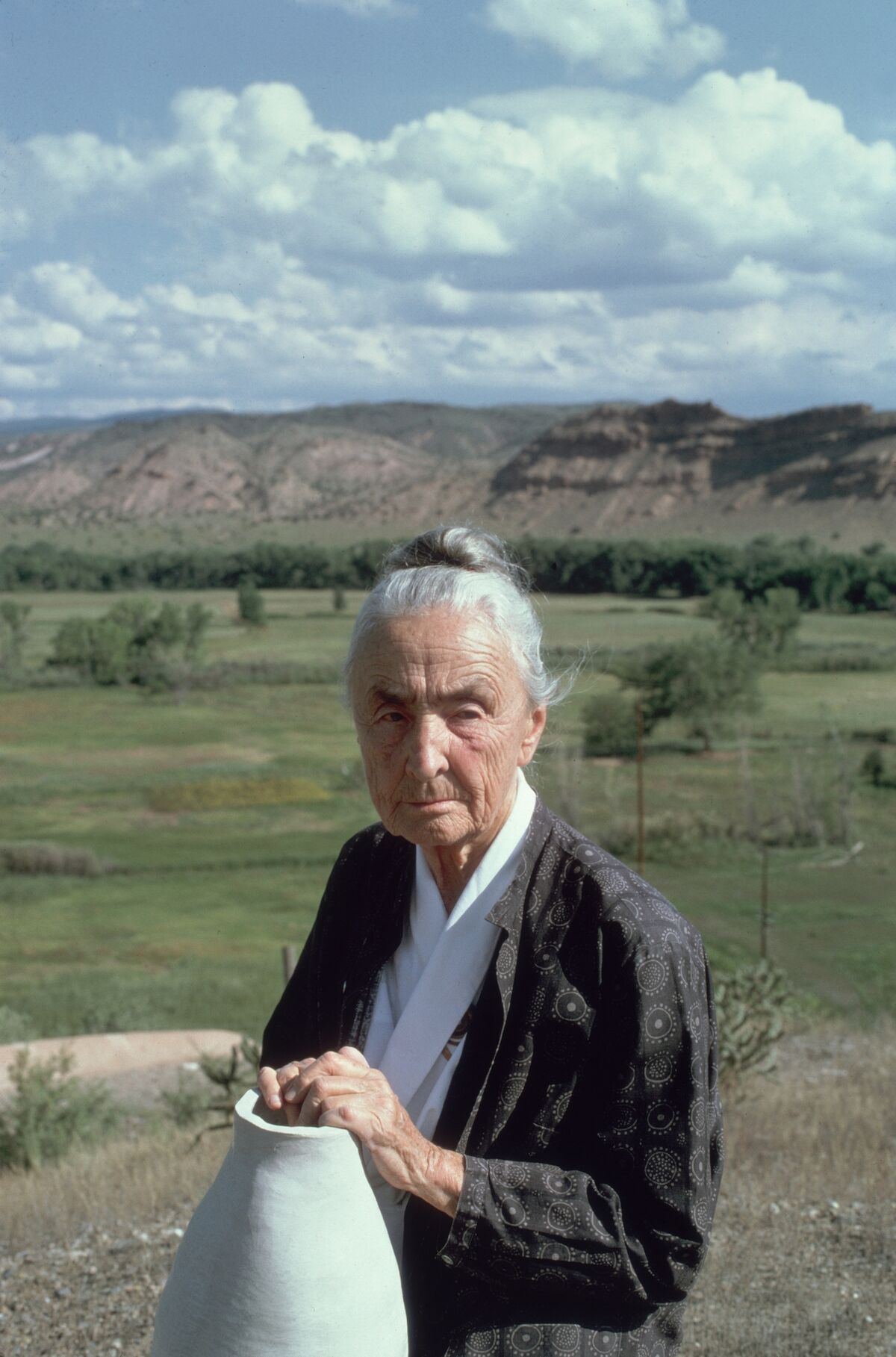
Portrait of Georgia O’Keeffe in Abiquiu, New Mexico, 1974. Photo by Joe Munroe/Hulton Archive/Getty Images.
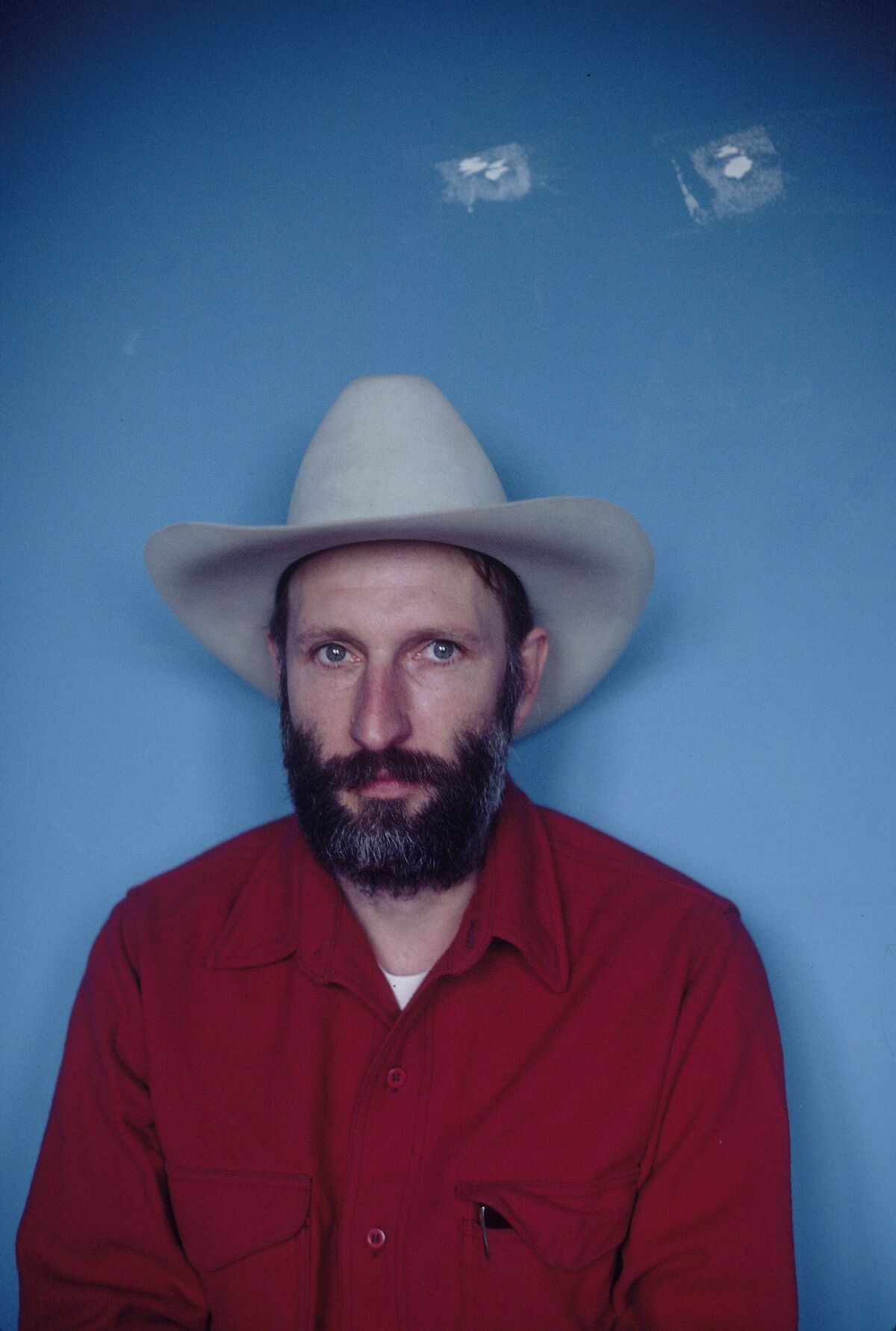
Portrait of Bruce Nauman in New Mexico by Francois Le Diascorn/Gamma-Rapho via Getty Images.
O’Keeffe is just one of countless modern and contemporary artists who’ve been drawn out of big-city art centers by New Mexico’s magnetic pull. They’ve been lured there by expansive vistas, quietude, and respite from social and market pressures. Other prominent New Mexico residents have included Marsden Hartley, Agnes Martin, Dennis Hopper, Ken Price, Larry Bell, Nancy Holt, Bruce Nauman, Richard Tuttle, Harmony Hammond, andJudy Chicago
, among many others. Arts patrons, scholars, and writers—like Mabel Dodge Luhan, Willa Cather, D.H. Lawrence, and Lucy Lippard—have landed and stuck there, too. Long before them though, Native American artists started making art inspired by the transcendent, boundless landscape.
“New Mexico is a place where you—as a creative person, as an artist—can really work,” explained Lisa Le Feuvre, the director of the Holt/Smithson Foundation, from her office in Santa Fe. “A lot of the buzz in your peripheral vision that you get in bigger cities disappears, so it makes your thoughts and ideas much more intentional.”
 Georgia O’KeeffeRed Hills with Flowers, 1937
Georgia O’KeeffeRed Hills with Flowers, 1937
judy ChicagoMarie Antoinette 1973/2017, 2017
About a year ago, Le Feuvre relocated from London to Santa Fe to run the Holt/Smithson Foundation, an organization set up to preserve the legacy of Holt and her husband Robert Smithson
, both land artists
. The couple, who married in 1963, lived itinerantly for most of their lives together, until Smithson died tragically in a 1973 plane crash. Holt moved to New Mexico in 1995 and stayed there until her death in 2014.
“From what I’ve learned, she felt it was a good place to live and to think,” Le Feuvre explained of Holt’s attraction to Galisteo, a small town with a population of around 250, which rises from a vast expanse of desert around 20 miles south of Santa Fe. “For Nancy Holt—like for Harmony Hammond, Bruce Nauman, and most artists [who relocate here]—New Mexico is a choice of somewhere to live and to work, rather than being a necessary place to live and to work.”
The early years: the Taos Society of Artists and Mabel Dodge’s grand entrance

The history of artists choosing New Mexico over big cities and coastal states is long and rich. As early as 1898, Ernest Blumenschein
and Bert Geer Phillips, two painters traveling from Denver, made the unexpected decision to live in Taos—one of several New Mexican towns (including Santa Fe, Galisteo, and Belen) that have since become artist havens.
Blumenschein and Phillips had a different destination in mind—Mexico—when they left Colorado on a sketching expedition. But when their wagon broke down 20 miles north of Taos, they fell for the desert town, and soon encouraged other artists to follow them.
By 1915, three years after New Mexico officially became a state, they’d established the Taos Society of Artists with fellow male painters Joseph Henry Sharp, E. Irving Couse, Oscar Berninghaus
, and William Herbert Dunton. They made paintings in response to their new surroundings: sweeping landscapes and vigorous, expressive portraits of cowboys and Native Americans. The latter representations tend to read as uncomfortable exoticizations today, especially considering white settlers’ encroachment on Native American land and the bloody altercations that ensued at the time.
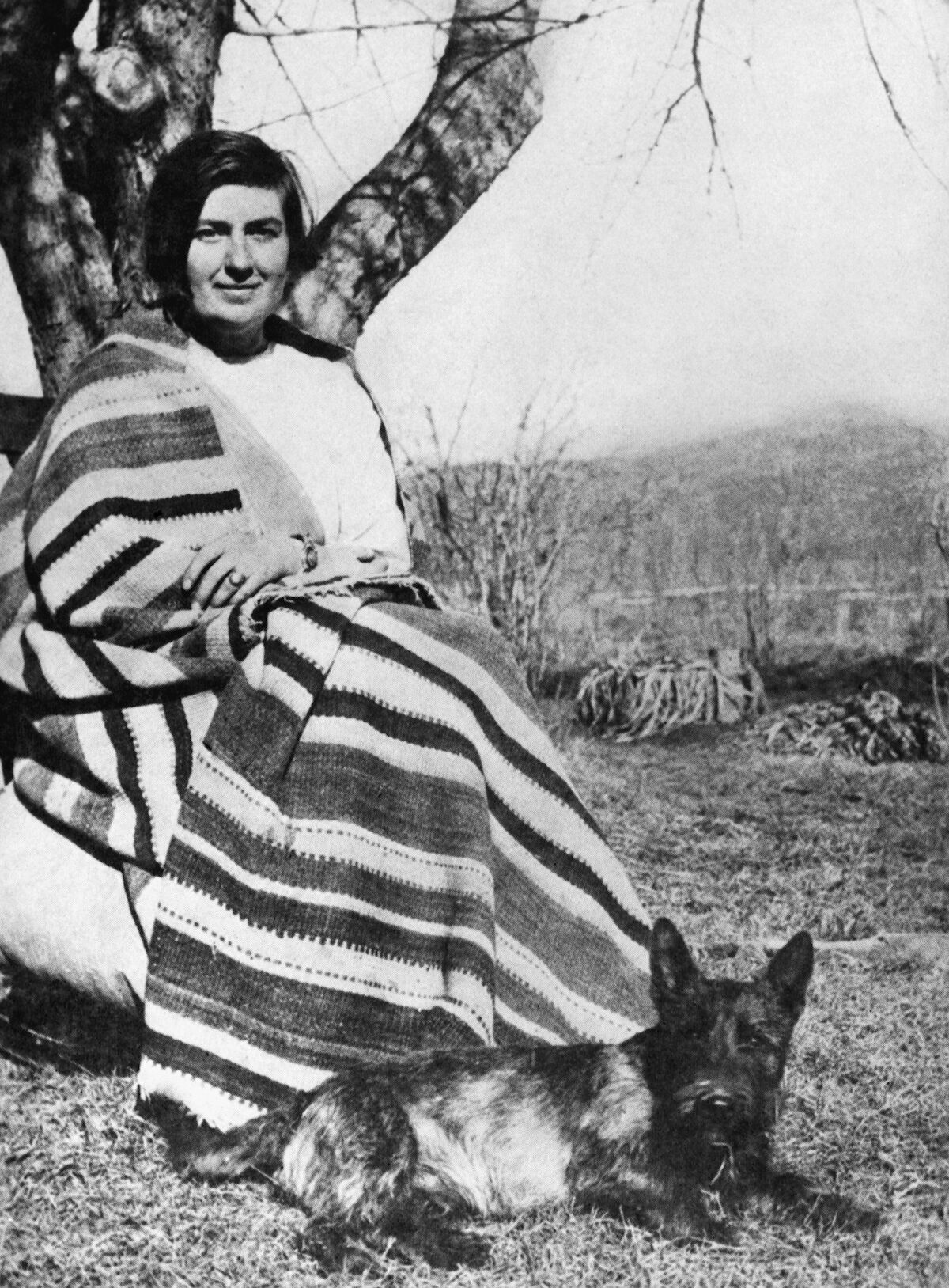
Portrait of Mabel Dodge Luhan (undated). Courtesy of Bettmann/Contributor via Getty.
Two years later, in December 1917, art patron Mabel Dodge landed in Taos. At the time, the town had a population of 2,000, compared to the 4 million–plus people living in New York City, where Dodge had been a prominent modern-art collector and salon host. In her 1987 memoir Edge of Taos Desert: An Escape to Reality, she described New Mexico’s allure like a panacea: “From the very first day, I found out that the sunshine in New Mexico could do almost anything with one: make one well if one felt ill, or change a dark mood and lighten it,” Dodge wrote. “It entered into one’s deepest places and melted the thick, slow densities. It made one feel good. That is, alive.”
By 1918, she’d fallen in love with Antonio “Tony” Luhan, a Native American of the Taos Pueblo. Not long after, the couple—who eventually married in 1923—purchased 12 acres of land and built a 17-room home. Named Los Gallos, the ranch became a retreat-cum-residency for countless artists, writers, and intellectuals of the day.
Andrew DasburgAmerican, 1887–1979Follow
United States, American Modernism, Painting, Landscapes, The American West, 1860–1969, Abstract versus Figurative Art, Passage, 1900–1917, …, Ansel Adams, Martha Graham, and Carl Jung were all guests.
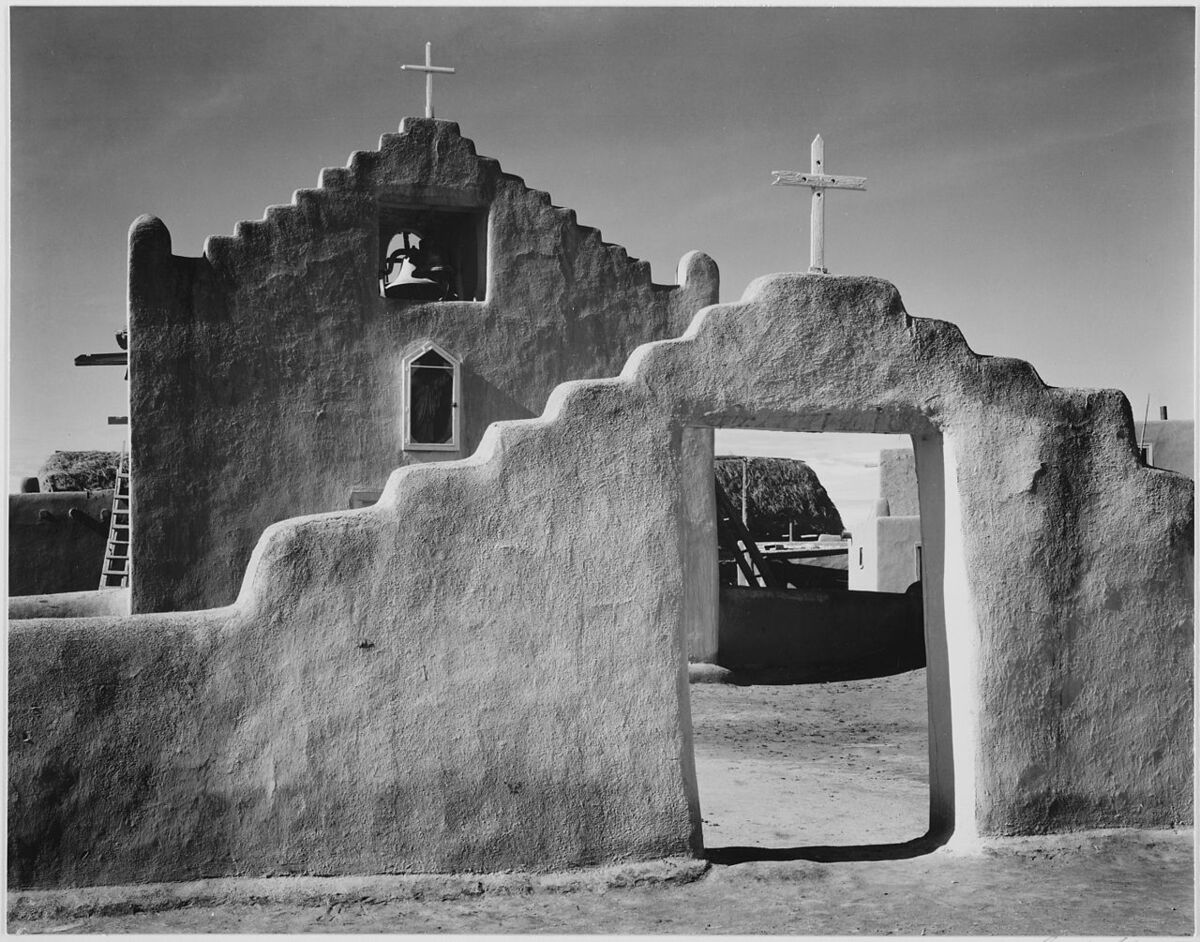
Ansel Adams, Church, Taos Pueblo National Historic Landmark, New Mexico, 1941. Courtesy of The National Archives.
As a patron and a cultural theorist, Dodge also supported the art of local Native American artists. Pueblo painters Ma-Pe-Wi, Pop Challee (Luhan’s niece), and Awa Tsireh were among Dodge and Luhan’s circle. Dodge commissioned Tsireh to create a sprawling mural in the entryway of Los Gallos. In the early 1920s, she also helped found the Indian Arts Fund, with a mission to “[educate] the people of the United States as to the value of America’s only surviving indigenous art.” In her writings, too, she praised traditional Pueblo paintings, weavings, and vessels, having been drawn to the way artists channeled the transcendental power of the New Mexican landscape into geometric patterns.
But like most white artists and patrons who’d settled in New Mexico, Dodge’s response to Native American artists was often reductive. She grouped their work together, rather than recognizing individual practices; she praised their creative instincts over their honed formal skills. In 1919, Dodge organized a New York exhibition of Native American artworks, which she labeled as “primitive,” while simultaneously positioning them within the Western modernist tradition. As Chelsea Weathers pointed out in Artforum, the decision to do so “points to [Dodge]’s—as well as many modernist artists’ and audiences’—difficulty accepting the art of non-Anglo cultures on its own terms.”
Autonomy in the desert: Georgia O’Keeffe and Agnes Martin go west
 Georgia O’KeeffeMy Front Yard, Summer, 1941
Georgia O’KeeffeMy Front Yard, Summer, 1941
"Georgia O'Keeffe" at Tate Modern, London
It was also Dodge who encouraged O’Keeffe to make her second trip to New Mexico, in 1929. The two women had previously known each other in New York, where O’Keeffe had attended Dodge’s salons. “I like what Mabel has dug up out of the Earth here,” the painter wrote soon after arriving at Los Gallos, promptly making a connection between the environment and productivity. “It is just unbelievable—one perfect day after another—everyone going like mad after something.”
Even in her first months in Taos, O’Keeffe experienced newfound freedom, autonomy, and tranquility taking hold of her. “I chose coming away because here at least I feel good, and it makes me feel I am growing very tall and straight inside—and very still,” she wrote to Stieglitz, who was by then her husband, and rooted in New York.

Georgia O’Keeffe on the patio of her home in Abiquiu, New Mexico. Photo by Cecil Beaton/Condé Nast via Getty Images.
Almost instantaneously, Taos also influenced O’Keeffe’s work. “I made several little drawings,” she wrote again to Stieglitz in 1930. “It was wonderful sitting there alone watching the light and shadow over the desert and mountains.…It all interests me much more than people—they seem almost not to exist.” Later, O’Keeffe made homes on the remote lands of Ghost Ranch and Abiquiu—located east of Taos and Santa Fe. She’d speak of the desert with ownership, linking it directly to her paintings. “It’s my private mountain. It belongs to me,” she once said of the Cerro Pedernal mountain that rose up from the sandy expanse behind her home. “God told me if I painted it enough, I could have it.”

Abstract painter Agnes Martin stayed put in New Mexico for similar reasons, including to escape the pressures of New York. “At that time, I had quite a common complaint of artists—especially in America,” she told John Gruen in a 1976 profile in ARTnews. “It seemed to have been something that happens to all of us. From an overdeveloped sense of responsibility, we sort of cave in.” Martin had struggled with mental illness during her life, and settling in a place like rural New Mexico, where solitude was easier to find, calmed her and fueled her productivity.
Martin’s first introduction to the state came in 1946, after a period of itinerancy. The artist moved from Manhattan—where she’d been enrolled at Columbia Teachers College—to Delaware, Washington, and many places in between. Along the way, she made ends meet as a waitress, a dishwasher, and even a tennis coach.
When she set foot in New Mexico, though, Martin’s wandering stopped. She stayed put for more than 10 years, devoting her full attention to painting for the first time. There, she also made her first big stylistic leap: “decisively towards abstraction,” as Nancy Princenthal wrote in her 2015 biography of the artist.
Artists have equated the state’s wide-open spaces and remove with freedom—to experiment, to be themselves, and to veer boldly away from trends or norms.
Martin returned to New York in 1957 at the urging of art dealer Betty Parsons, who was looking out for the artist’s career. But Martin found herself back in New Mexico by 1968. “I drove around and drove around, and then I had a vision of an adobe brick,” she remembered somewhat mystically, in 1987. “So I thought that must be New Mexico so I went back.” She lived between the small towns of Cuba and Galisteo for the rest of her life. It was the longest she’d settled in any one place: 36 years.
Martin adored the pared-down New Mexican landscape, and she made her enthusiasm for the outdoors loudly known. In Princenthal’s biography, local photographer Mildred Tolbert remembered a hike with Martin up Wheeler Peak. As they descended past a stream, the painter yelled happily into the mountains: “I like your plumbing, Lord!”
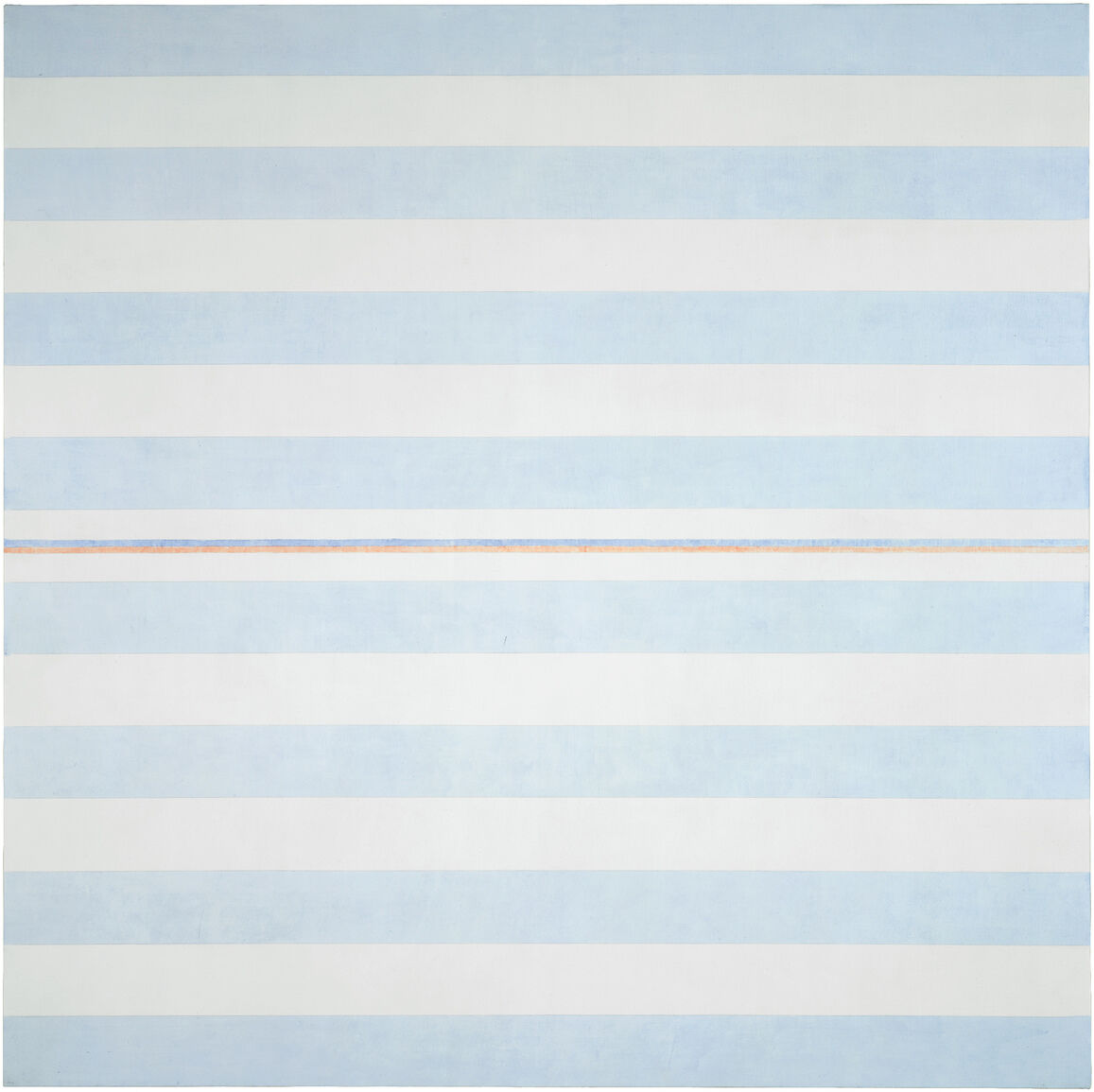
Agnes Martin, Blessings, 2000. © 2018 Estate of Agnes Martin /Artists Rights Society (ARS), New York.
agnes MartinUntitled #1, 2003
"Agnes Martin" at Tate Modern, London (2015)
From the homes she built in Cuba and Galisteo, Martin could take in wide swathes of desert and sky. In New York, the urban grid had been her jumping-off point for hard-edged Minimalist
abstractions. But the compositions she painted in New Mexico loosened, diffused, and became decidedly more atmospheric: filled with bands of hazy pink and soft, diaphanous yellows. Princenthal connects this shift to the desert landscape that surrounded Martin: “It could be said that the urban grid gave way, gradually but conclusively, to a rural vision of open expanses and to sunlit shades of desert, rock, and sky.” Importantly, she offered a caveat: “As always, [Martin] would resist such associations to the landscape.”
For Martin, New Mexico’s “Wild West” also offered a reprieve from overbearing social conventions. She lived in a community “where single women were not uncommon, where homosexuality was more acceptable than elsewhere, and where independent spirits were welcome,” Princenthal wrote. In this environment, the less-guarded Hartley was free to be openly gay, and Dodge and O’Keeffe had unabashed relationships with women.
Getting the hell out of L.A.: Dennis Hopper, Ken Price, and more escape to Taos
Many artists came to New Mexico to get away from the throngs of big-city artists, and the competition they came with. The tight-knit, liberal communities of Santa Fe, Taos, and Galisteo offered welcome support and creative exchange.
In 1970, the artist, actor, and filmmaker Dennis Hopper craved respite from Hollywood and looked to New Mexico—and to Dodge’s retreat-residency model. He didn’t want to completely relinquish his community, though. Rather, he hoped to transport it to a new context. That year, he bought Dodge’s compound from her granddaughter for $160,000. The goal was to resuscitate it as a “counterculture mecca,” according to Patricia Leigh Brown in her 1997 New York Timesarticle “The Muse of Taos, Stirring Still.”
douglas KirklandDennis Hopper, New Mexico 1970, 1970
Hopper called his new hippie hideaway “Mud Palace.” He promptly invited creative types from around Los Angeles to nest and let loose—often with the aid of psychedelics—in its sprawling honeycomb of abode rooms. Jack Nicholson, Joni Mitchell, and Bob Dylan made the trip to Taos. So did a number of L.A.’s burgeoning cohort of Cool School and Light and Space
artists, who’d convened around the legendary Ferus Gallery.
Ken Price, one of the radical artists in this group, first descended upon New Mexico at Hopper’s suggestion. In the early 1970s, he rambled to Mud Palace with sculptor Robert Irwin
and painter Ed Moses
. He downplayed the experience in a 1980 interview, saying: “[We] pooped around, and we came back again.” But it wasn’t long before Price and his wife, Happy, bought a home in Taos. “We ended up just coming on up here—and staying.”
ken PriceMountain Cult, 2008
ken PriceImagination of Grandeur, 2008
The year was 1971, and Price had begun feeling overwhelmed by the Los Angeles art scene. “I was just being bombarded with images all day long in L.A., and had no control over it,” he explained in the same interview. In Taos, he could clear his head and raise his family. “It provided a kind of solace—a safe place [to be with his family] and a nurturing place to create work,” said LACMA curator Stephanie Barron, who organized the 2012 retrospective of Price’s work and visited him several times in New Mexico before his 2012 death.
The time that Price lived full-time in Taos—from 1971 until the early 1990s, and from 2003 until his death—deeply affected his practice. “Coming to New Mexico influenced my work right away,” he recalled, in 2007, of his first stint in the state. The bulbous ceramic cups he’d been making prior became craggy and rough, as if hewn from desert rock or recently cooled lava.
Price’s use of color shifted, too, reflecting the vibrant New Mexico sunsets. Blazing pinks and fierce, sulfuric yellows began flooding his watercolors. “The sunsets aren’t pretty and sweet,” he said of the skies that shifted outside of his Taos home, “they are spectacular and amazing.” Barron linked the state’s landscape even more directly to Price’s work: “The richness of his palette was absolutely in sync with his environment. I don’t think those could have been done in an urban, New York studio.”
Like so many artists drawn to New Mexico, Price also relished the quiet. “I think [New Mexico] provides the same benefit for most of its artists: It leaves us alone and doesn’t prevent us from doing our work. It leaves us to control our activities and succeed or fail on our own,” he said in 2007.
“A lot of the buzz in your peripheral vision that you get in bigger cities disappears, so it makes your thoughts and ideas much more intentional.”
Still, Price wasn’t lacking a supportive community. Light and Space artist Larry Bell—Price’s dear friend and onetime studio mate in Los Angeles—relocated to New Mexico, too. “I just loved the place, and I fell in love with the people. And it was quiet. You could really control your distractions,” Bell toldGalerie in 2018.
bruce NaumanSetting a Good Corner (Allegory & Metaphor), 1999
Bruce Nauman landed in New Mexico in 1979, drawn to that mix of Wild West remoteness—land stretching for miles, keeping neighbors at healthy distance—and relative proximity to like-minded artists. Nauman didn’t live far from Agnes Martin; their friendship developed over trips to the local racetrack to bet on horses. “She knew how to pick ’em,” Nauman told the New York Times last year.
Barron summed up this balance, where privacy and social interaction coexist: “[New Mexico] allowed [these artists] to be an individual, as well as part of a loosely knit community.”
Space for women: Harmony Hammond, Nancy Holt, and Judy Chicago
Harmony Hammond, a leader of the feminist art
movement, “didn’t come [to New Mexico] for a community of artists at all,” as she insisted in a 2008 conversation with Julia Bryan-Wilson. But that didn’t stop several of her friends from joining her in Galisteo. Lippard—a feminist theorist and curator—and Holt—a land artist—both followed Hammond’s lead and settled in the small town. “I started staying with Harmony when I was out here,” Lippard told the Santa Fe New Mexican last year, “and suddenly the land across the creek was open, and I never looked at anything else.”
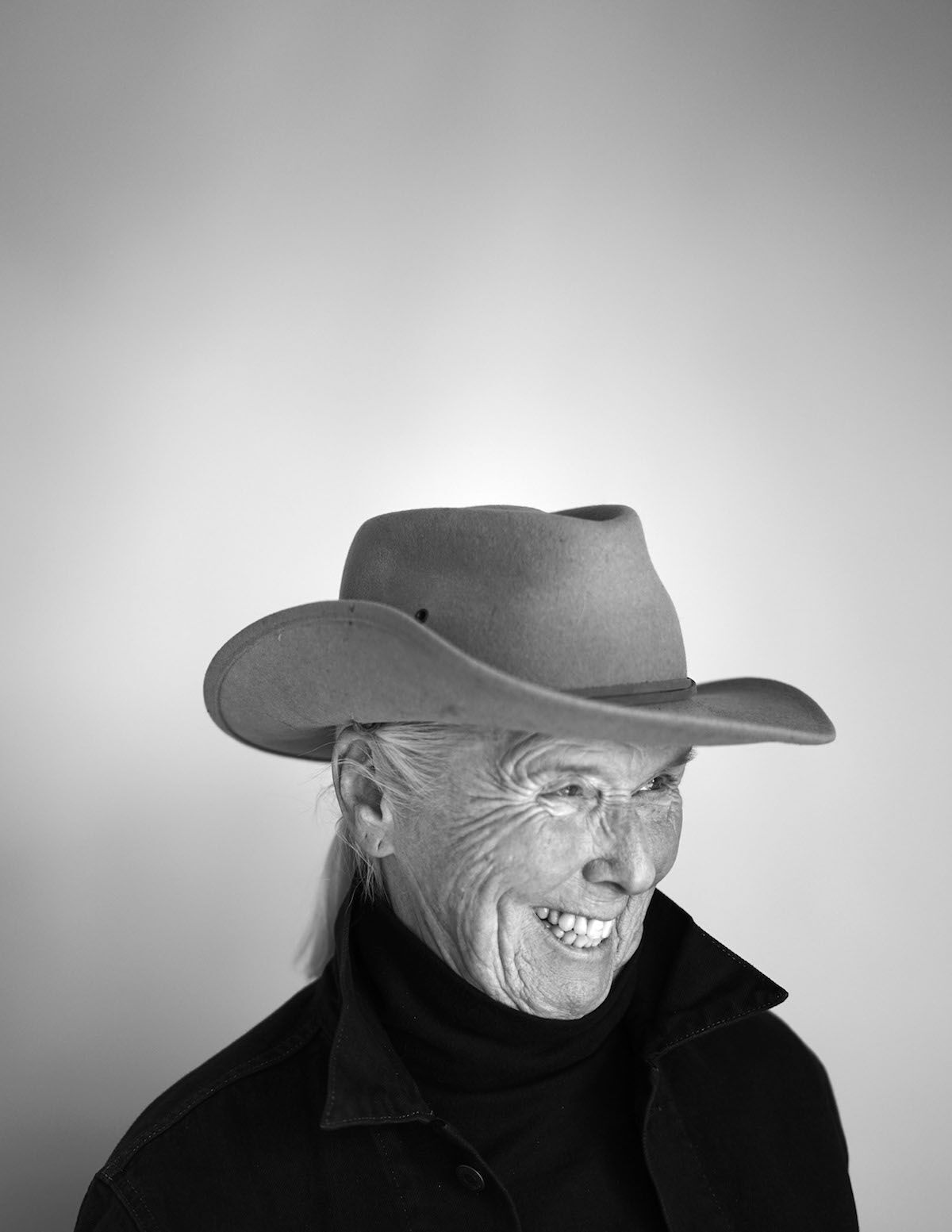
Portrait of Harmony Hammond by Clayton Porter.
For her part, Hammond connected her move to Galisteo to a longer lineage of female artists, like Martin and O’Keeffe, who settled in New Mexico before them. “There’s something about this big space that gives everybody room to be who they think they are. Historically that’s been true for women,” she told Bryan-Wilson. “If they didn’t fit into the social structures on the East Coast, and they didn’t have money to go to Europe, they went west. They could smoke cigarettes. They could wear pants. They could swear. They could do whatever. Many were bisexual or lesbian. The west—it’s outlaw territory. I’m just assuming that’s one reason I feel quite comfortable.” (Five decades of Hammond’s work is currently on view at the Aldrich Contemporary Art Museum through September 15th.)
harmony HammondBandaged Grid #1, 2015
The Aldrich Contemporary Art Museum
Judy Chicago, another pioneering feminist artist, also described her attraction to New Mexico in terms of space—both physical and psychological. “The light, the quiet and the psychic space to pursue my own vision far from the pressures of the market-driven art world,” Chicago explained, drew her to Belen, a small town with a population of around 7,000, located 30 miles south of Albuquerque.
Chicago has lived in New Mexico full-time since 1985. In 1993, she and her husband, photographer Donald Woodman, bought a 7,000-square-foot derelict railroad hotel in Belen, transforming it into their home and studio space. More recently, it’s also become home to Chicago’s nonprofit art space, Flower, whose mission is to “counter the erasure of women’s achievement through art,” the artist explained.
“New Mexico is a choice of somewhere to live and to work, rather than being a necessary place to live and to work.”
Hammond and Chicago join a long line of artists who equate the state’s wide-open spaces and the remove from the pressures of urban art centers with freedom—to experiment, to be themselves, and to veer boldly away from trends or norms.
It’s no surprise that many of them installed massive windows in their homes and studios, so they could perceive the landscape’s expansiveness—and the sense of freedom it offered—even indoors. Price’s and Nauman’s homes both contain windows with sprawling desert views. Holt’s did, too. “Through [her windows] you can literally perceive time,” Le Feuvre explained. “You can see the light changing, you can see the conditions of the earth changing. And when you watch the light, something amazing happens: you become aware of your own physical presence—not just on the Earth, but in the universe.”
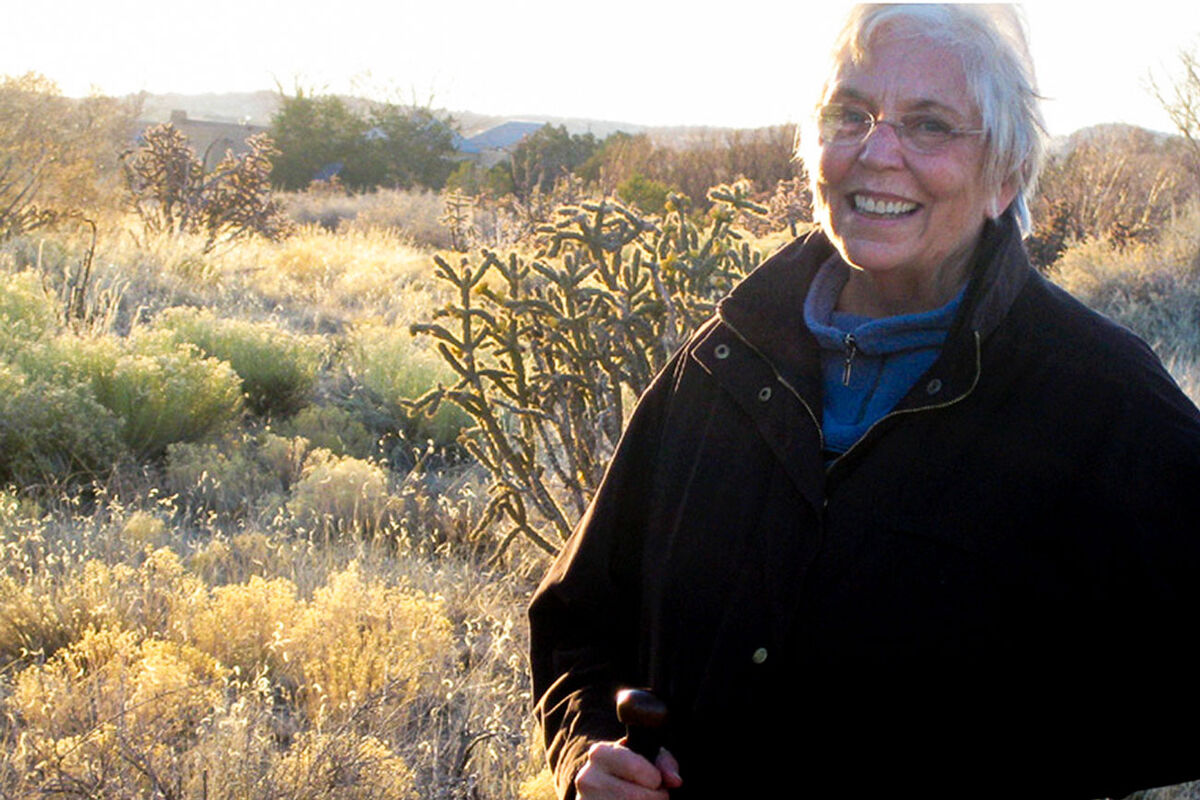
Portrait of Nancy Holt at her property in Galisteo, New Mexico, 2008. Photo by Alena Williams © Holt-Smithson Foundation, Licensed by VAGA/New York.
She continued: “And that’s something that is fundamental to Nancy Holt’s work: This sense of how we, as human beings, find our place in the universe.”
O’Keeffe also transformed a wall of her Abiquiu studio into a long picture window, creating a panorama of the Chama river valley and her beloved Pedernal mountain beyond. The landscape became the subject of over 20 of her paintings.
“I wish you could see what I see out the window,” O’Keeffe wrote to Arthur Dove in 1942. “The earth pink and yellow cliffs to the north…pink and purple hills in front and the scrubby fine dull green cedars—and a feeling of much space.” She continued, summarizing New Mexico’s impact with pure, unadulterated awe: “It is a very beautiful world.”

